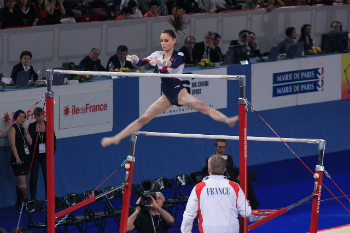You may have already wondered why Mathematics, Portuguese Language or Science classes present a linear logic in the contents that are learned at school, and why Physical Education, on the contrary, usually repeats the contents throughout elementary school and/or average. In general, the answer appears immediately: it is because Physical Education is not “matter” (discipline).
This fact is far from true. Although many Physical Education teachers are not interested in covering all the content that should be worked on at school, and they just use working with team sports at school (soccer, volleyball, basketball and handball), Physical Education, as a school subject, has the purpose to work with the body culture that the student carries with him due to his experience, as well as introducing him to various manifestations of culture body.
First, it is necessary to clarify the meaning of body culture: it is, quite simply speaking, about present meaning to any gestures, attitudes, movements, games, dances, sports and other manifestations bodily. In this sense, the intention of Physical Education is to make students understand and value their bodily manifestations, as well as endeavoring to value and apprehend bodily manifestations of other cultures. During this process of valuing one's own culture and other cultures through the body, another fundamental element of education is in progress: the break with prejudice. This is because, as the student learns about other cultures and recognizes their value, prejudices are broken.
It is in this sense that the Ministry of Education has, in an official document, all the contents that must be worked with students during elementary school. As there are many contents, they were grouped into three blocks, each with its own specificity, but with relationships between them:
| Sports, games, fights and gymnastics | Rhythmic and expressive activities |
| knowledge about the body |
The first block encompasses knowledge such as individual and team sports (athletics, volleyball, basketball, football, chess, swimming, among others); cooperative and competitive games (burn, police and thief, butter bar, hopscotch, etc.); fights and martial arts (judo, karate, Greco-Roman, etc.); and gymnastics, such as Swedish, aerobics, sports rhythm, artistic, among others.
Do not stop now... There's more after the advertising ;)
The second block refers to artistic and dance activities, such as elements of body expression, ballroom dancing, free dancing, modern dance, among others.
The last block is perhaps the least worked on by Physical Education teachers, as it necessarily refers to theoretical discussions. In “knowledge about the body” elements of the structure of the human body (anatomy) must be worked out; elements of the inner workings of the human body (physiology); understanding of the human body movement process (kinesiology); understanding of the cultural construction of the human body (anthropology); and the social relationships that are established from this body (sociology).
Thus, from this introduction on what Physical Education should teach, it is possible to see that this discipline is much more complex than we usually see. Given the range of possibilities of content presented, the view (unfortunately still common) that Physical Education is restricted to the practice of team sports becomes sad.
By Paula Rondinelli
Brazil School Collaborator
Graduated in Physical Education from the São Paulo State University “Júlio de Mesquita Filho” – UNESP
Master in Motricity Sciences from the São Paulo State University “Júlio de Mesquita Filho” – UNESP
PhD student in Latin American Integration at the University of São Paulo - USP
PE - Brazil School


